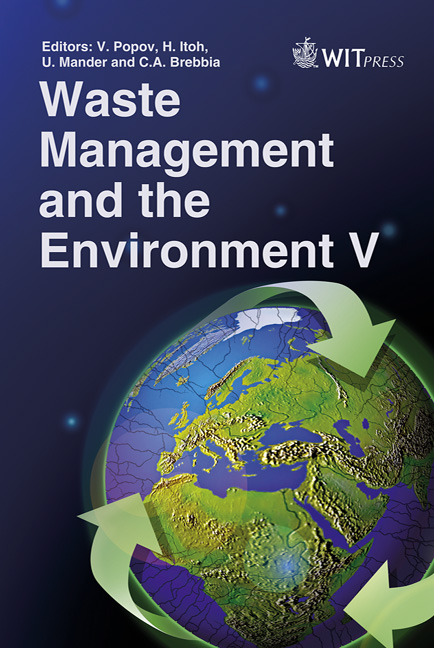Water Treatment Sludge Can Be Used As An Adsorbent For Heavy Metals In Wastewater Streams
Price
Free (open access)
Transaction
Volume
140
Pages
11
Page Range
379 - 389
Published
2010
Size
337 kb
Paper DOI
10.2495/WM100341
Copyright
WIT Press
Author(s)
Y.-F. Zhou & R. J. Haynes
Abstract
Throughout the world, alum is the most widely used coagulant in drinking water treatment. The waste stream from water treatment is alum-derived water treatment sludge and in most localities large quantities of this material are deposited in waste disposal areas. Reuse of this waste stream in an environmentally sustainable manner is therefore a priority. Research has shown that the material is an effective adsorbent of phosphate from aqueous solutions, but its use as an adsorbent for heavy metals has not been investigated. Our research showed that water treatment sludge was an effective adsorbent for Pb(II), Cr(III) and Cr(VI). Adsorption isotherm data fitted equally well to Freundlich and Langmuir equations and kinetic data correlated well to a pseudosecond- order kinetic model, suggesting that the mechanism involved was chemisorption. Adsorption was pH-dependant with percentage sorption of Pb(II) and Cr(III) increasing greatly with increasing pH and that of Cr(VI) decreasing. Cr(VI) could be removed from sludge surfaces with 0.1 M NaOH. At a concentration of 0.1M, HNO3 was effective at removing adsorbed Cr(III) and Pb(II) from the sludge surfaces and regeneration was successful for eight sorption/removal cycles. Other work showed that water treatment sludge had adsorbent properties for Cu, Zn, Cd, As and Se. It was concluded that water treatment sludge is a suitable material from which to develop a low-cost adsorbent for removal of both heavy metal cations and anions from wastewater streams. Keywords: water treatment sludge, adsorption isotherms, Cr(III), Cr(VI), Pb(II).
Keywords
water treatment sludge, adsorption isotherms, Cr(III), Cr(VI), Pb(II)





